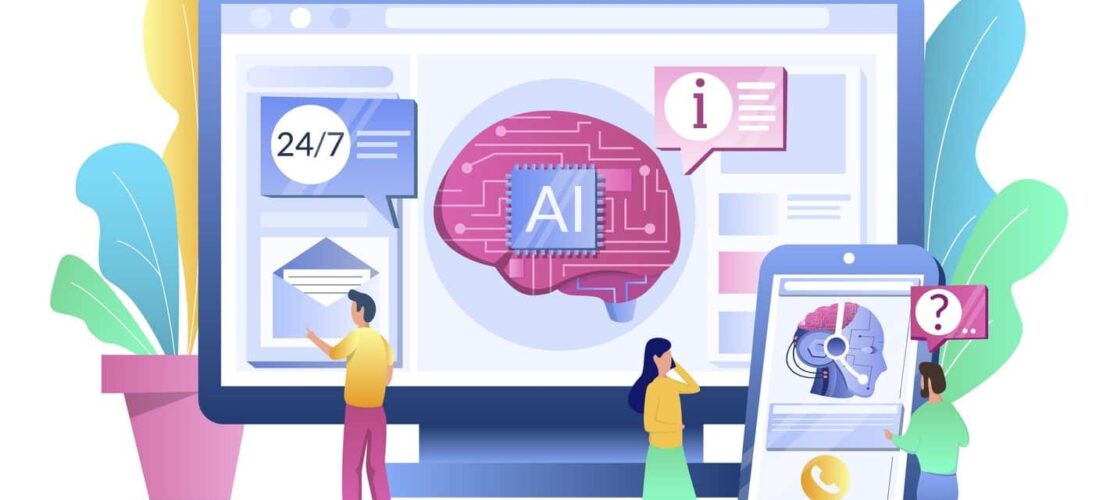
Learning in the flow of work might soon become the norm in corporate training. Artificial Intelligence and digital technology can help us get there.
Learning in the flow of work is a type of on-the-job training, where learning is worked seamlessly into every workday.
It’s a natural response to our fast-paced, highly connected, always-on business world.
It allows organizations to have the best of both worlds: teams that are highly productive, but still have time for learning and development.
The term was coined by corporate L&D thought leader Josh Bersin, who teamed up with LinkedIn to conduct research on the importance of everyday learning.
His research revealed that the way employees learn – and want to learn – is fundamentally changing.
They want access to training that is frequent, efficient, embedded into the workday, and laser-focused on relevant skills and information. He dubbed this brand of training “learning in the flow of work.”
But what does this have to do with AI and digital technology?
Well, emerging technology is the clearest path to transitioning from disruptive, humdrum training to ultra-efficient, on-demand learning. In fact, it’s already revolutionizing how we learn and work.
And that’s exactly what we’re going to cover today. Here are 5 ways that technology and AI are transforming learning in the flow of work:
- Strong digital frameworks support a new era of learning
- On-the-job training, reimagined
- The influence of AI
- Corporate learning libraries with a tech twist
- New building blocks of continuous learning culture
- Zeroing in on employee experience
DIGITAL TECHNOLOGY & AI: PAVING THE WAY FOR LEARNING IN THE FLOW OF WORK

Strong digital frameworks support a new era of learning
Technology is key to making learning an everyday reality. Digital workplace tools allow you to weave learning seamlessly into the workday.
Tech tools can enable remote training, mobile training, gamification, online learning libraries, virtual assistants, and more. All of these tools are highly flexible, customizable, adaptable – which means they’re perfect for on-the-go training.
If you have a remote or hybrid workforce, digital workplace technology is a must-have.
But, even if your teams are in the office 5 days a week, the right technology will significantly accelerate your workflow learning revolution.
Want to lead a digital transformation in your workplace that opens new possibilities for employee training? Check out this article!
On-the-job training, reimagined
When it comes to learning in the flow of work, on-the-job training is a must.
Learning that is completely segmented from the workflow tends to hamper productivity and doesn’t allow for immediate application of new knowledge.
Meanwhile, on-the-job training reduces disruptions and provides the opportunity to execute new concepts immediately.
But how can you provide near-daily training opportunities that boost productivity, rather than taking time away from other important tasks? Enter technology and modern L&D practices.
Microlearning is a training technique that divides learning into small segments that are about 1-5 minutes each. Microlearning is intended to pack a punch in a small package, to maximize learning and minimize disruption.
If companies combine microlearning principles with tools like AI and mobile training, they can provide targeted training to every employee, every day.
For example, a training platform that uses AI could track an employee’s knowledge level and send a personalized microlearning module into their inbox every morning. It doesn’t get more efficient than that!
To learn more about microlearning, click here!

The influence of AI
Let’s take a step back and consider what “learning in the flow of work” means. It is training that occurs frequently and instantaneously, often in the moment of need. It is also efficient, convenient, and highly specific.
What does that have to do with AI?
Well, imagine a training tool that can assess your learning needs in real-time, as you are working on a project, and make recommendations.
Imagine a tool that knows your skill level and can predict the information that will be most helpful to you at any given moment. It knows, for example, that your public speaking skills need reinforcement, so it sends you a public speaking lesson the week before your quarterly presentation!
Imagine, even, a virtual assistant that provides all the answers you need as your questions arise, using company-specific information.
AI can accomplish this. And much more!
Because AI is inherently adaptive, instantaneous, and forward-thinking, it’s likely to be one of the most important tools for facilitating learning in the flow of work.
Corporate learning libraries with a tech twist
We’ve established that bite-sized pieces of specialized information are a great way to support learning in the flow of work.
But how do you get those nuggets of knowledge to employees? One way is to create a well-organized learning library that is easy to access.
This way, employees know exactly where to retrieve the information they need, rather than turning to, say, Google for answers.
Employee support companies like Moveworks are revamping the way we store and share resources with employees.
Moveworks combines a company-specific resource library with AI, to facilitate lightning speed learning and problem-solving.
Moveworks partners with clients to create a customized employee support bot that can answer questions, solve problems, and provide vital resources in real-time.
The customized bot is loaded with info on company processes, API capabilities, software access, and more. It’s a company encyclopedia and customer support agent, all in one. What does this look like, in real terms?
Suppose an employee needs to provide an electronic signature, but they don’t have access to software, like DocuSign, that enables secure electronic signature transfers.
They can send a message to their bot asking for help. In seconds, the bot responds with a link to their newly created DocuSign account!
Moveworks is a prime example of the paradigm-breaking efficiency gains that are made possible by AI and workflow learning.

New building blocks of continuous learning culture
At RTG Solutions Group, we believe that learning in the flow of work can only be achieved when you create a culture of continuous learning at your organization.
Why? Because, in businesses with agile learning cultures, employees are encouraged to ask questions, think critically, and proactively seek new skills and knowledge.
Learning isn’t restricted to quarterly training sessions; it’s part of the everyday work culture. And that’s exactly what workflow learning is all about!
When you create a culture of learning, employees will be receptive and eager for learning opportunities on an everyday basis. In other words, they’ll be primed to learn in the flow of work.
While a learning culture can exist without snazzy technology, the right technology can promote and reinforce a learning culture.
Take, for example, gamification in training. Gamification imbues training with “game-like” elements to make learning more engaging and effective.
An organization could enable gamification on their Learning Management System (LMS), by assigning points to training objectives. Employees could then have access to a leaderboard, showing the company’s top learners of the week.
By blending learning with healthy competition, gamification can make employees eager to participate in training and development on a regular basis. That’s what learning culture – and learning in the flow of work – is all about!
Want to build a learning culture, but don’t know where to start? Try our 4-step approach.
Zeroing in on employee experience
It is impossible to understate the importance of the employee experience when crafting a workflow learning strategy.
The entire purpose of learning in the flow of work is to make training efficient, frequent, proactive, accessible, and minimally disruptive.
For this reason, the learner’s experience must be the key priority in your L&D strategy. It cannot be an after-thought!
Innovative digital tools and AI allow L&D teams to zero in on the employee experience like never before.
Transforming user experience has been at the core of all the innovations we’ve mentioned so far.
For example, microlearning cements learning while disturbing the workday as little as possible. Mobile learning squeezes a vast world of learning into employees most frequently used device.
Company chatbots, like Moveworks, provide resources precisely at the moment of need, solving employees’ problems faster than ever. Gamification increases engagement, which makes training more fun and effective. The list goes on.
To create truly effective workflow learning opportunities, employers should keep the user experience at the center of their instructional design – and tech decisions.
As you build your training program’s tech resources, you can ask yourself questions like these to center the employee experience:
- How can our training resources anticipate an employee’s learning needs before they arise?
- What tools will allow employees to access training as quickly and efficiently as possible?
- How well do our learning platforms integrate with employees’ everyday software and platforms?
- Are our training resources effective for people with different learning styles?
- How can we filter information, so that employees don’t have to consume content that is irrelevant to their position or skill level?
Conclusion
In a world that never stops changing, employees and businesses should never stop learning. For this reason, more and more organizations are looking to facilitate learning in the flow of work.
Learning in the flow of work prioritizes efficiency, consistency, and immediacy. Digital technology and AI may very well be the driving force that makes workflow learning the new norm.
Does your organization need to revamp its employee training? Contact us today to speak with our learning & development experts!
